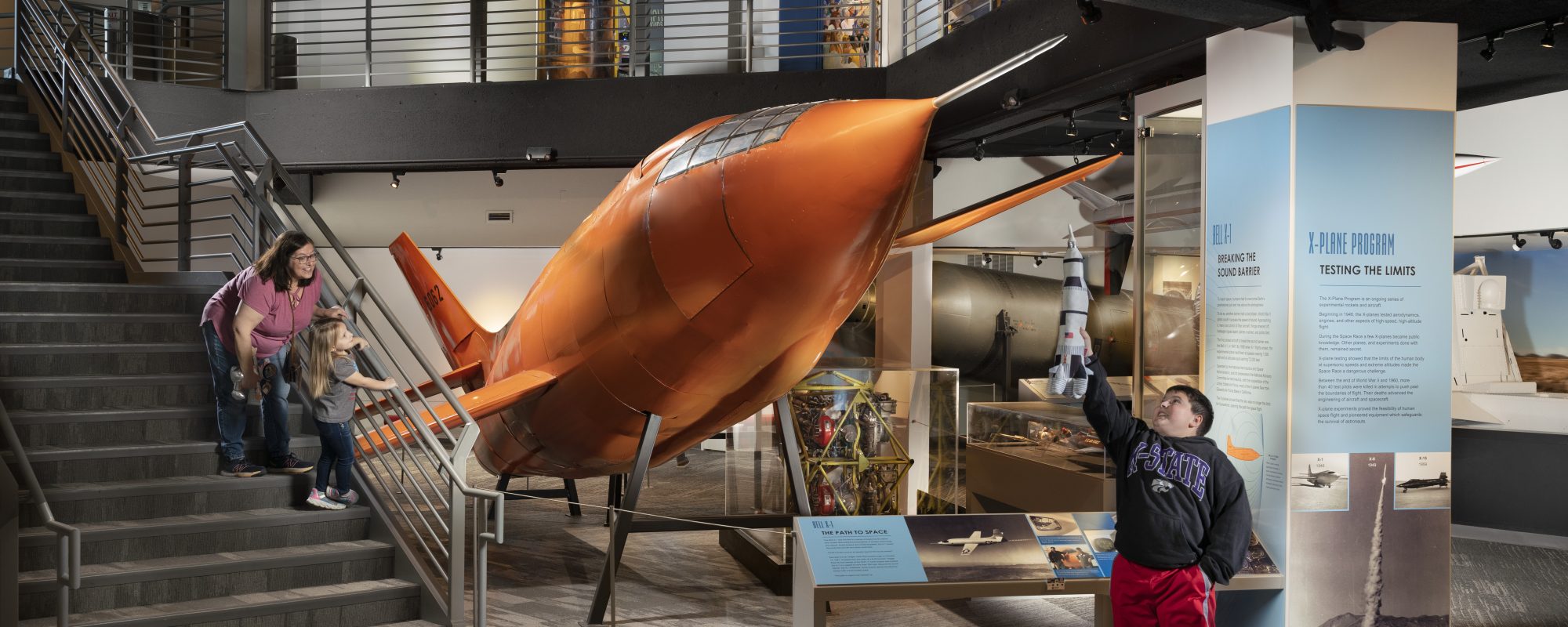Colonel Buz Carpenter piloted the SR-71 hanging in the Cosmosphere Lobby. Today, he checked in with us to answer students’ questions about what it was like to fly the SR-71.
We wore space suits because the air is so thin at 35miles up in the air that if something happened, the suit would be your protection. At that altitude you can see the curvature of the Earth, the ski above would be black because 97% of our atmosphere would be below you & you could see over 320 miles in any direction. From over Hutchinson you could see Wichita and Kansas City fairly clearly. One could view the states of Colorado, Oklahoma, Missouri, Nebraska, Texas and Arkansas.
Much like when you have been in the Cosmosphere Planetarium and saw the magnificent stars; this aircraft had a special sensor that could see the stars and the airplane automatically navigated off the stars that it could clearly see – day or night. Just like the ancient sailors at sea, the stars gave you your current position and would be used to navigate your route.
To fly west to east over Kansas would take this aircraft about 12 minutes and flying south to north about 6 minutes. From Los Angeles to Washington DC it took 64 minutes.
Traveling at these high speeds, often better than one half mile per second, (up to 35 miles a minute) as the air rubbed against the aircraft it would heat the aircraft up. The aircraft had an average temperature of about 600 degrees. This is why the aircraft is 93% titanium because aluminum loses its strength at these kinds of temperatures. How many of you have helped your Mom or Dad put a pizza in the oven? That oven is around 450 degrees. The pilots side window was 560 degrees and the aircraft grew in length 3-4 inches and 1-2 inches in width as it flew due to the heat it generated. The aircraft was painted black because black is the best color to radiate heat away from an object. If any of you have a wood-burning stove, it’s black to radiate as much heat as possible from the fire into the room to provide heat.
For More Learning...
- Look at a map of the United States and find Colorado, Oklahoma, Missouri, Nebraska, Texas, Arkansas and Kansas to understand how many states an SR-71 crew could see at one time from the air.
- For older students, learn more about celestial navigation and the mathematics that support it. For younger students, use an interactive sky chart to identify what stars you can see in the sky above your home tonight.
- Based on an average speed of 2,200 miles per hour, calculate how long it would take to get to some of your favorite destinations if you had an SR-71!


